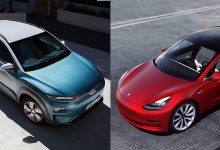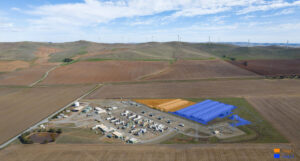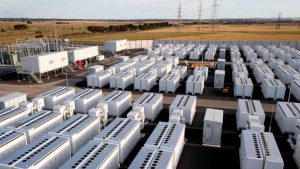AGL says it anticipates a 20-fold increase in behind the meter battery storage capacity in Australia over the next 10 years, driven by the influx of electric vehicles which it says will account for half of all new car sales by 2030. And it intends to tailor its business accordingly.
In a sure sign that AGL is recognising the shift from a business model based around centralised generation, AGL says its future business model will be based on the “shared” economy in electricity and transport, focused around customer choice of rooftop solar, household batteries and electric vehicles.
In its annual “investor day” presentation to analysts on Wednesday, which also included news of its contract to buy four large scale batteries in NSW, and its intention to seek other big battery opportunities in other parts of the grid, AGL predicted there would be 2.6 million EVs on the road in Australia by 2030.
This would mean that EVs would account for around 50 per cent of new car sales – just as outlined by Labor in its pre-election policy targets that were mocked by the Coalition and conservative media.
Not only that, AGL expects the shift to autonomous driving and shared transport to also happen quickly. “Less than 1/3 of consumers will actually own cars,” says Dominique Van Den Berg , the head of distributed energy at AGL. “Electric vehicles will accelerate that transition.”
The company’s presentation noted the number of homes and businesses with battery storage would likely jump to 700,000 by 2030, but in some scenarios could match the current coverage of rooftop solar, or about one in four homes, or nearly two million.
However, this is expected to be dwarfed by the number of electric vehicles on the road, which could increase the battery storage capacity 20-fold by 2030, to a total of 40GWh, with most of that coming from EVs.
Some analysts, such as Bloomberg, have suggested that the battery resource from EVs could be ten times that number once the fleet becomes fully electric, and AEMO, like other international grid operators, is also starting to study how it can tap into that resource.
The trick for utilities like AGL will be to understand when, where and how they will be charged and able to provide energy back into the grid, and how to harness those assets into their business models and consumer offerings. AGL’s focus in on “orchestration”. But it’s yet to be seen how that can be done.
AGL’s efforts are being driven by changes in technologies and also emerging competition from new retailers eyeing opportunities in distributed energy. The UK-based and Mitsubishi backed Ovo Energy this week won a retail licence to operate in Australia, and is expected to bring its focus on combining rooftop solar, battery and electric vehicle charging options for consumers.
Oil giant Shell is also looking to enter Australia’s electricity market, and has made an agreed bid for ERM Power, as it prepares for what it sees as the inevitable “electrification” of transport and manufacturing.














